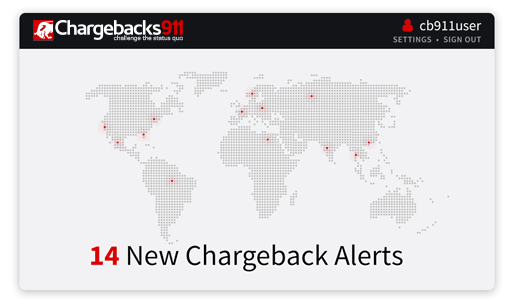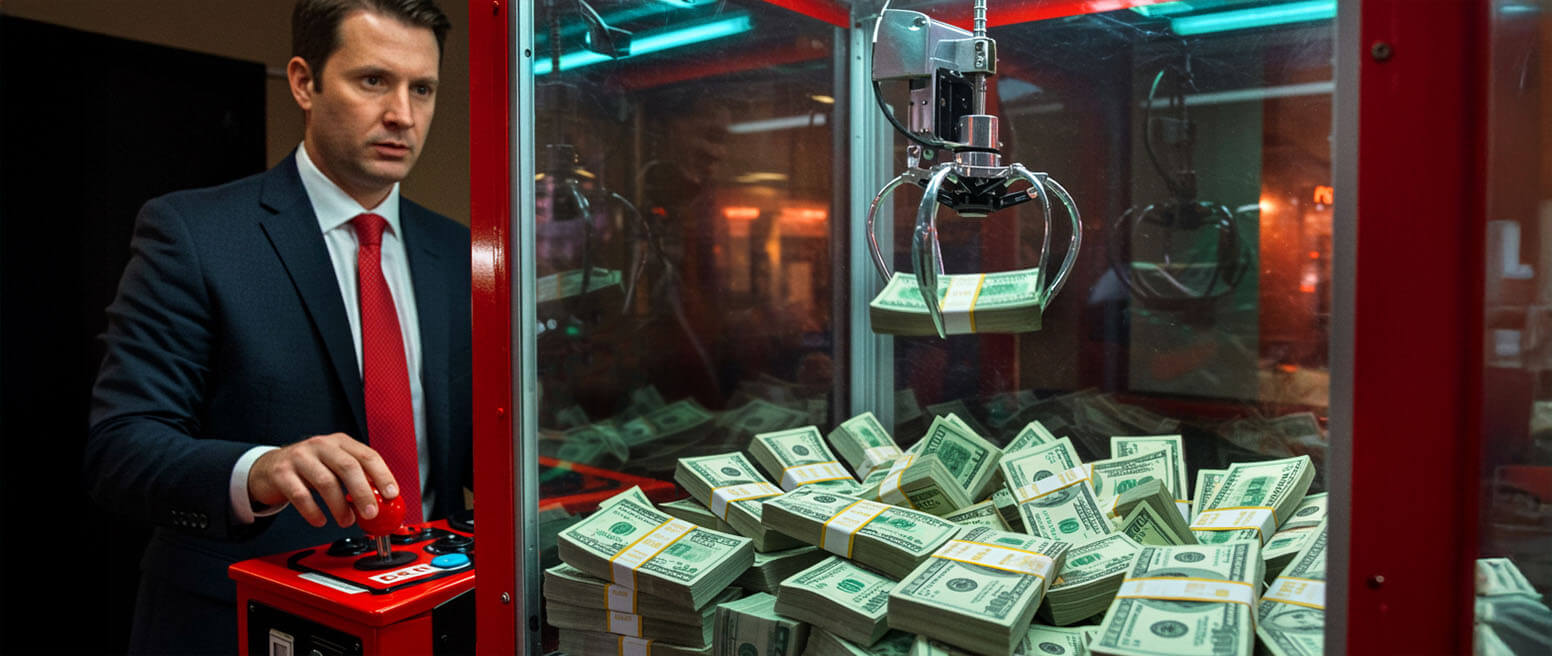How to Prevent Double Refund Chargebacks & Unnecessary Revenue Loss
If there’s one thing worse than a chargeback…it’s getting hit with a double refund chargeback.
A double refund chargeback can happen inadvertently. However, an increasing number of consumers are discovering that they can play the chargeback system to their advantage. An intentional scam of this type is illegal, but there are loopholes that allow consumers to get away with it.
Criminal fraudsters are getting in on the act, too. More savvy criminals will use tricks to avoid suspicion. They may allow some time to pass between the refund and the chargeback. They might even request a partial rebate just to throw you off their trail.
So, how do double-refund chargebacks happen, and how do they affect you? Most importantly, what can you do to stop them from happening?
Recommended reading
- Chargeback Automation | Better Dispute Management
- Revenue Recovery: Tips & Best Practices to Reclaim Money
- What’s an “Acceptable” Chargeback Rate? Why Does it Matter?
- Chargeback Accounting: How it Works | Tips & Best Practices
- Chargeback Reduction Plan: a Guide to Develop Your Strategy
- Chargeback Reports | Use Past Data to Stop Future Disputes
What is a Double Refund Chargeback?
- Double Refund Chargeback
A double refund chargeback occurs when a cardholder requests a refund for a transaction, then files a chargeback for the same purchase. The merchant dutifully refunds the charge, unaware that the cardholder plans to dispute the charge and get their money back twice.
[noun]/duhb • uhl • rē • fuhnd • chahrj • bak/It’s not unusual for a customer to ask you for a refund. Providing a refund doesn’t guarantee that that customer won’t attempt to file a chargeback later, though.
By the same token, a customer who files a chargeback may also turn around and contact you to demand a refund. This is what is meant by “double refund.”
In simple terms, a double refund happens when a customer manipulates the chargeback process and gets refunded twice for the same transaction. Once via the refund process, and once via the chargeback process. You’ll lose the revenue from that sale twice. You’ll also lose the product, shipping fees, overhead, and associated chargeback fees.
This is a surprisingly common problem. In fact, we may be able to link over 10% of all chargebacks to a double refund after a dispute situation, as per data from SEON.
How Do Double Refunds Happen?
So, how do double refund chargebacks happen? There are two primary ways in which a double refund can occur. First, if you issue a refund, but then the cardholder files a chargeback anyway. Second, if you issue a refund, not knowing a chargeback is already in progress.
Chargeback Filed
After Issuing a Refund
The consumer contacts you, requesting a refund. You honor the request. The funds, however, don’t show in the customer’s account when expected. The customer files a chargeback, assuming you ignored or denied the refund request. Both the chargeback and the refund both get processed.
Chargeback Filed
Before Refund is Issued
The consumer contacts the bank and initiates a dispute. The same customer then contacts you and requests a refund. You want to avoid a chargeback, so you issue the refund. What you don’t realize is that the cardholder has already filed a dispute with their bank.
Either of these situations could develop innocently and organically. Your customer may actually believe you forgot about the refund. They could also contact you for a refund after contacting the bank, unaware that the bank already started the chargeback process.
However, bad actors increasingly leverage the double refund chargeback as a tool for scamming merchants. If the bank doesn’t notice the discrepancy and you don’t fight the claim, the fraudster keeps all the money. On the other hand, you lose more than twice the original cost of the transaction when accounting for fees.
Why Do Double Refunds Happen?
There are actually several reasons why double refunds happen. Not all of them are intentionally sketchy, or the product of bad actors.
Sometimes, a mistake occurred in your fulfillment process, or the customer misunderstood your refund terms. In either case, something went wrong along the order chain. To illustrate how double refunds happen, here are some of the most common reasons, accidental or otherwise:

These examples highlight the multifaceted nature of double refunds. They also underscore the importance of having efficient, well-communicated, and technologically sound processes in place to handle customer transactions and disputes. Recognizing these scenarios is the first step towards preventing them.
How Are Card Networks Responding to Double Refunds?
Both Visa and Mastercard implemented new procedures to avoid chargebacks for refunded purchases. For example, both brands now mandate return authorization for all return transactions. To process a return, you must first obtain authorization. In other words, it’s the same procedure as seeking authorization for an initial purchase, but in reverse.
Cardholders can see the authorization immediately on their online statement. They can track the funds until the money gets deposited in their account.
Obtaining Authorization
Just like seeking approval for a purchase, merchants must now obtain authorization from the card issuer to process a return. This added step ensures that the refund process is initiated formally and is tracked by both the merchant and the card issuer.
Visibility for Cardholders
Cardholders can immediately see the authorization for the return on their online statements. This transparency allows them to track the progress of the refund until the funds are deposited back into their account. Immediate visibility can reduce confusion and impatience, decreasing the likelihood of a premature chargeback request.
Return authorizations are a step in the right direction, but they aren’t a guarantee against a double refund after disputes. Mitigating double refund risk calls for a diversified approach. The mix of different tools and tactics you need depends on whether you’re being wholly proactive or trying to stop double refunds after disputes have been filed.
Preventing Double Refund Chargebacks: Before a Dispute
Preventing chargebacks — and the subsequent double refunds — is a straightforward process. You provide prompt responses to valid refund requests and communicate with customers as the refund progresses. This calls for:
Immediate Refund Processing Alert
As soon as a customer requests a refund, promptly acknowledge it and inform them when you begin processing their request. This immediate communication helps set the right expectations and reassures the customer that their request is being addressed.Issuance of Refund Notice
When the refund is officially issued, email or notify the customer. This step is crucial as it confirms that the action has been taken on your end, eliminating any ambiguity about the status of their refund.Provide a Clear Timeline
Provide an estimated timeline for when the funds will be available in the buyer’s account. Different payment methods and banks might have varying processing times, so an approximate timeframe helps manage customer expectations.Follow-Up
Follow up to make sure the customer received their refund. This step demonstrates excellent customer service. It also gives you a chance to rectify any issues that might have arisen during the refund process.Preventing Double Refund Chargebacks: After a Dispute
Preventing double refund chargebacks can get trickier if a dispute is already in progress. Still, many issuers allow a small window to resolve issues before disputes escalate to chargebacks. The size of this window varies by issuer. It allows you to assess the situation and take preventative steps, though.
When a cardholder calls to request a refund, they may mention that they just spoke to their bank. That’s a red flag indicating a chargeback may already be underway. Check to see if the cardholder’s bank assigned the transaction a case number. This is a clear sign that the dispute already graduated to a chargeback. That’s not ideal, but offering a refund on top of it would be worse.
If you learn the customer has already contacted the bank, you immediately need to call that issuer to check for a case number:
- If a case number is assigned, simply disregard the refund request. The chargeback is already underway.
- If a case number is not assigned, inform the bank that a refund has been initiated and the chargeback is not necessary.
Once a claim has a case number, the damage is done. Even if you can reverse the chargeback through representment, your bottom line and chargeback-to-transaction ratio will be impacted. No one wants a chargeback, but don’t try to issue a refund beyond this point: doing so will only lead to a double refund chargeback.
Double Refunds & Representment
So, you refunded a cardholder twice. The issuer didn’t catch it, so you’re left bearing the full loss. What are your options now? This chart helps explain the different situations and outcomes:
| If… | Then… |
| a chargeback is illegitimate, and a refund wasn’t warranted | you should deny the refund request, take note of the case number, watch for the chargeback, and dispute it when it arrives. |
| a chargeback results from a valid consumer complaint | you should accept the chargeback as a loss. |
| you issue a refund, but the customer files a chargeback anyway | you can fight the chargeback through representment. All you will need is proof that a refund has already been processed. |
The representment process offers an opportunity to recover your funds. It’s also complex and time-consuming, though, and demands detailed recordkeeping. Learn more about the chargeback representment process here.
Using Alerts & Inquiries to Prevent Double Refund Chargebacks
Preventing double refund chargebacks is not just about good customer service; it's also about smart use of technology. Chargeback alerts and inquiry systems are powerful tools that can play a crucial role in this process.
Embracing Chargeback Alerts

Chargeback alerts notify you the moment a customer initiates a chargeback process. This immediate information is invaluable because it gives you a chance to act quickly.
Once you get an alert, you have the opportunity to issue a refund before the chargeback is fully processed. This can be a strategic move. By refunding the customer quickly, you can often avoid the chargeback, associated fees, and administrative hassles.
Quick action on chargeback alerts also sends a message to your customers that you are attentive and proactive. This can help maintain and even improve customer relationships, as they see that you're committed to ensuring their satisfaction.
Network Inquiries for Clarity
When a chargeback inquiry comes in, it's an opportunity for you to provide the customer's bank with detailed insights about the transaction using platforms like Order Insights or Consumer Clarity. This can include information on the refund process that's already underway.
By clearly communicating with the bank about the status of a refund, you can often prevent the chargeback from going through. So, when responding to inquiries, be prepared with all necessary documentation. This can include transaction receipts, customer communication records, and other relevant information showing you have acted appropriately in issuing a refund.
Providing thorough and timely responses to inquiries helps in individual cases and builds your reputation with banks and credit card processors as a reliable and responsible merchant. This can be beneficial in the long run, particularly if disputes arise in the future.
Stop Double Refund Chargebacks Today
Using alerts and inquiries effectively is part of a larger strategy to manage refunds and prevent chargebacks. The goal is to protect your revenue and enhance your credibility and trustworthiness as a business. This is why a multi-layered approach to fraud and chargeback prevention can make all the difference in maintaining a healthy, thriving business.
Double refunds are a threat. With the right tools and tactics in place, though, you can prevent virtually all instances of double refunds.
FAQs
What is a double refund chargeback?
A double refund chargeback occurs when a customer receives a refund from a merchant for a transaction and also disputes the same charge with their bank or credit card issuer, resulting in two refunds for a single purchase. This can happen either inadvertently due to processing errors, or intentionally as a form of fraud.
Is double refund illegal?
Depending on the customer’s intention, it could be. Intentionally manipulating transactions to receive a double refund constitutes fraud and is illegal. However, accidental double refunds due to processing errors or miscommunications are not illegal but may lead to financial losses for the merchant.
Can I get a chargeback and refund for the same transaction?
Yes, you can face both a chargeback and a refund on the same transaction. This typically occurs when you process a refund while the customer simultaneously initiates a chargeback through their bank. This scenario can cause a double loss on a single transaction.
What is the difference between chargeback and refund?
A refund is a return of funds initiated by the merchant directly to the customer, usually due to a return or a service issue, while a chargeback is a forced transaction reversal initiated by the customer's bank or credit card issuer, often due to a dispute or unauthorized charge claim. Chargebacks involve a formal dispute process and can include additional fees and penalties for the merchant.
Is a refund considered a chargeback?
No, a refund is not considered a chargeback; they are two distinct processes. A refund is voluntarily initiated by the merchant, while a chargeback is a forced transaction reversal initiated by the customer's bank or credit card company, typically following a dispute.














